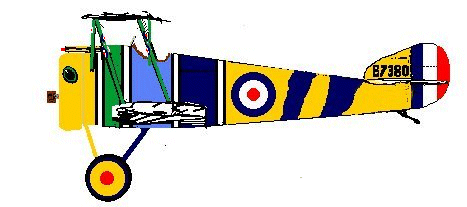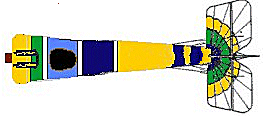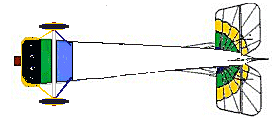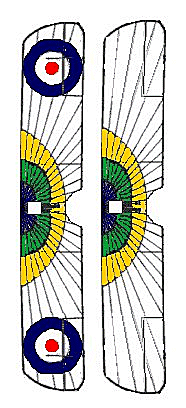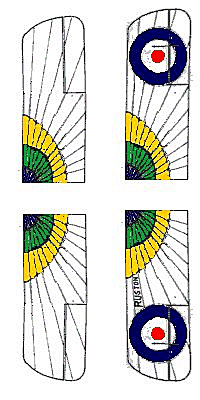Finally, the propellor was natural wood, with Red-Brown
tips and central boss. There were 'flares' of Red-Brown to either
side of the boss - both front and rear - edged in Pale Green, which in
turn was outlined in black.
The Ruston Logo appeared on both blades.
The engine cowling was Yellow, with black, white and Pale Green 'eyes'
and carried the legend 'Ruston - Lincoln' across the ten to two
position.
Suggested Colours - Humbrol Numbers:
Yellow - 154 Insignia Yellow
Pale Blue - 109 matt WW1 blue
Pale Green - 101 Matt Mid Green - add White to taste.
Roundel Blue - To match your decals.
Red - Ditto.
Wood - Dulux Brushwood ('mahogany' over 'pine' basecoat.)
Red-Brown - 100 Matt Red-Brown.
|
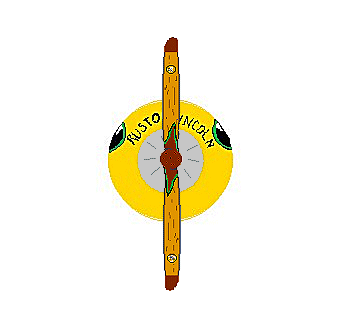
| Artwork
by Scho and PSP 5.0. (c) February 2000 |
|



